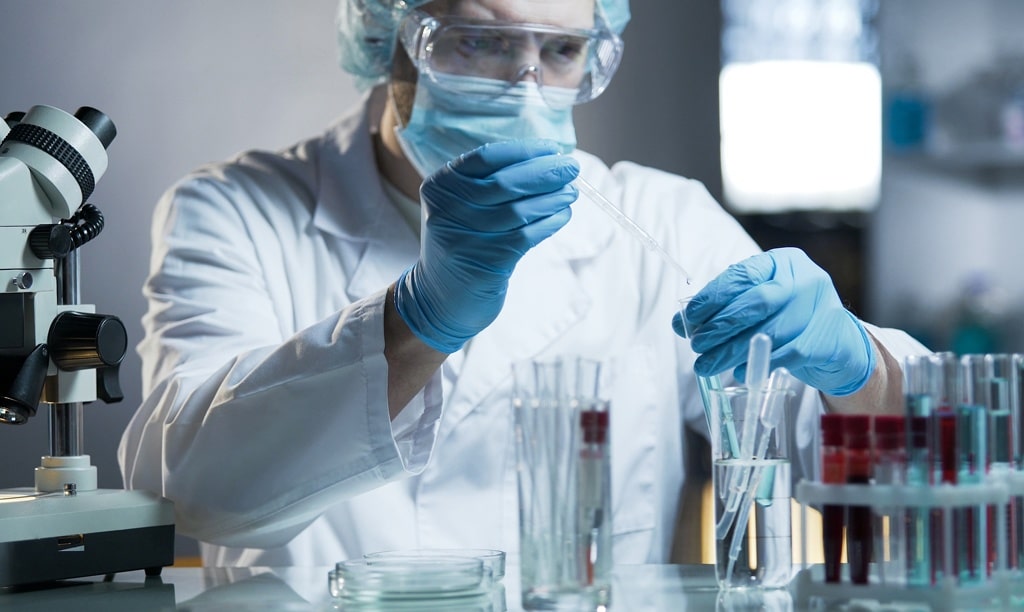Simulated Use vs. Exhaustive Extraction
When determining the amount and type of EO residuals in your medical device, two different methods are used for EO residual analysis. The two methods for EO residual evaluation are simulated-use extraction and exhaustive extraction. Evaluation of a device via either simulated-use or exhaustive extraction is sufficient to meet the ISO 10993-7 standards for EO residual testing. Evaluation of a device via both simulated-use and exhaustive extraction is not necessary.
Simulated-use Extraction
ISO 10993-7 states that simulated-use extraction evaluates “residue levels available to the patient or user from devices during the routine use of a device with water extraction to simulate product use.” This extraction method is used when only part, not the entire EO sterilized device, will be in contact with a patient. Thus, the simulated-use extraction will simulate the exposure of a patient to the fraction of the EO sterilized device that the patient would interact with during normal product use. For large, surface-contacting devices (such as drapes or gowns), the EO residual transferred to the patient may be estimated with a transfer reduction factor approach. The transfer reduction factor approach may be based on a weight or surface-area-proportion bases (Annex E of ISO 10993-7).
Exhaustive Extraction
ISO 10993-7 states that exhaustive extraction involves the extraction of EO “until the amount of EO or ECH in a subsequent extraction is less than 10 % of that detected in the first extraction, or until there is no analytically significant increase in the cumulative residue levels detected.” This extraction method is best used when the entire device will be in contact with a patient and estimates the majority of EO residual that a patient would be exposed to during device use. Extractions are typically performed every 24 hours until exhaustive criteria and device use (limited, prolonged, and/or permanent exposure) criteria are met. For large or complex devices, exhaustive extraction may be impractical. In these instances, extraction of representative portions of the device may be used to extrapolate the EO residuals for the entire device. If the yield of the first extraction is very small (as is the case with devices with little residue or devices that release analyte at slow rate), continue extraction until the increase in the cumulative yield of the analyte extracted is small relative to the analytical uncertainties.

Annex K of ISO 10993
Annex K of ISO 10993 details various methods for exhaustive and simulated-use extraction. Two forms of simulated use extraction are detailed: one for extraction to simulate product use and the other for ECH extraction using water. Additionally, multiple exhaustive extraction methods are detailed. These exhaustive extraction methods include: exhaustive extraction with thermal extraction, exhaustive extraction with ethanol followed by headspace gas analysis of the ethanol extract, exhaustive extraction with solvent, exhaustive extraction with ethanol followed by preparation of the bromohydrin derivative and chromatography using a gas chromatograph equipped with an ECD, and exhaustive extraction of ECH using water. We recommend consulting with a professional EO testing facility, such as MycoScience Labs, before deciding which exhaustive and simulated-use extraction methods you should use to test EO residuals for your device.
Additional considerations for EO residual testing parameters include:
- Product use time and temperature
- Patient fluid or tissue contact with the device
- Fluid flow across critical surfaces
- Pre-use or pre-treatment conditions
- Multi-system devices
- Grouped devices (devices of similar design but different sizes)
- Kits and trays
As an industry leader in medical device packaging testing with over 50 years of experience, Ethide Labs specializes in EO residual testing. Our analysts are available to help medical device manufacturers better understand EO residual testing and ultimately help provide validation for product regulatory approval.
Ethide Labs is a contract testing organization that specializes in Sterilization Validations and EO Residual Testing. Ethide Labs provides in-vitro cytotoxicity tests in-house and outsources in-vivo cytotoxicity work for toxicity testing of medical devices, products, and drugs. Ethide Labs also offers Microbiology Testing, Bioburden Testing, Environmental Monitoring, Bacterial Endotoxin Testing, Package Integrity Testing & Cytotoxicity Testing services for medical device companies and allied industries. Ethide is an ISO 13485 certified facility.
References
International Organization for Standardization. Biological evaluation of medical devices — Part 7: Ethylene oxide sterilization residuals. Geneva (Switzerland): ISO; 2008. (ISO 10993-7:2008).
Share this in your social networks


